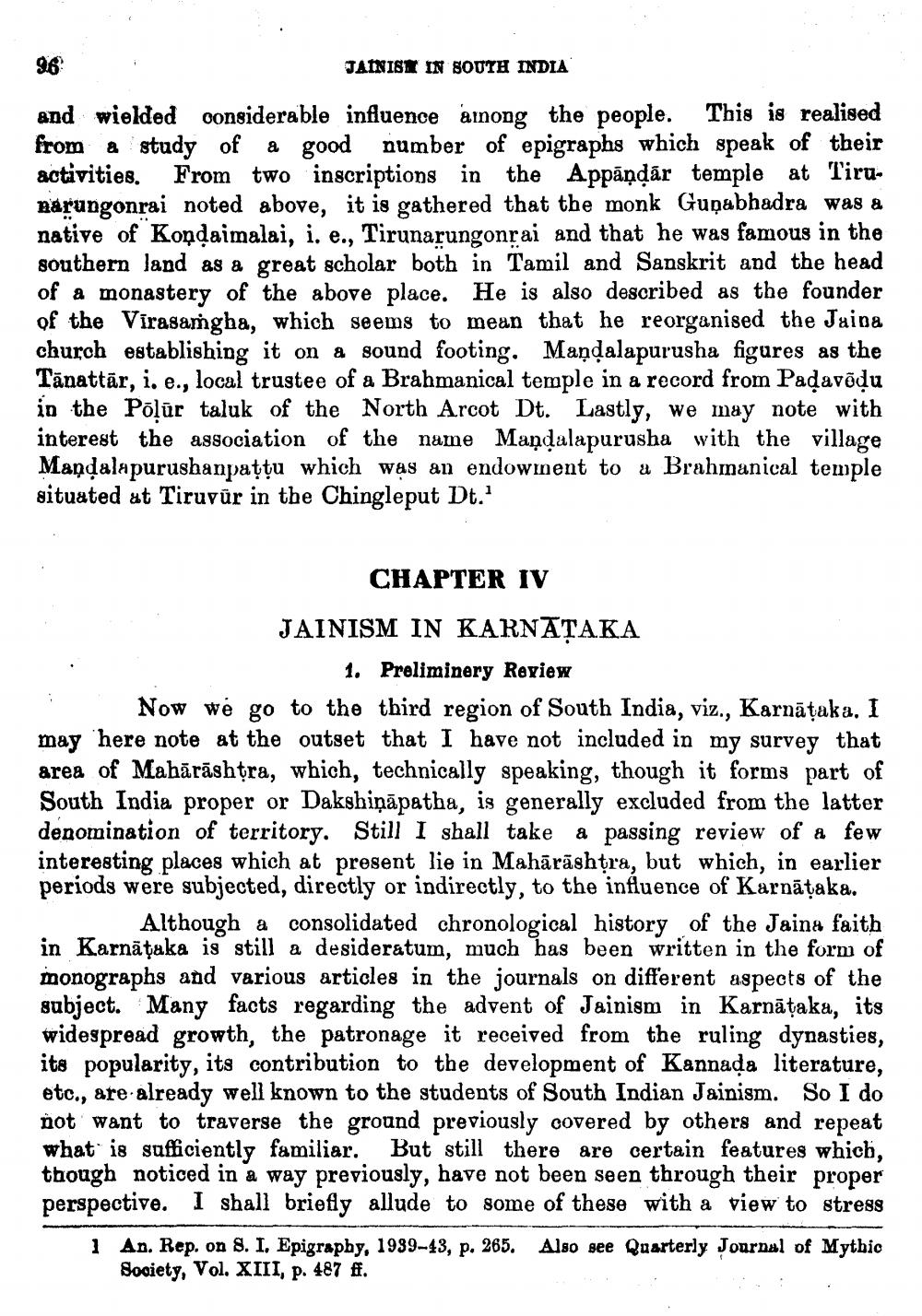________________
JAINISH IN SOUTH INDIA
and wielded considerable influence among the people. This is realised from a study of a good number of epigraphs which speak of their activities. From two inscriptions in the Appāņķār temple at Tiruparungonrai noted above, it is gathered that the monk Guņabhadra was a native of Kondaimalai, i. e., Tirunarungonrai and that he was famous in the southern land as a great scholar both in Tamil and Sanskrit and the head of a monastery of the above place. He is also described as the founder of the Virasamgha, which seems to mean that he reorganised the Jaina church establishing it on a sound footing. Mandalapurusha figures as the Tānattār, i. e., local trustee of a Brahmanical temple in a record from Padavõdu in the Põļūr taluk of the North Arcot Dt. Lastly, we may note with interest the association of the name Mandalapurusha with the village Mandalapurushanpattu which was an endowment to a Brahmanical temple situated at Tiruvũr in the Chingleput Dt.'
CHAPTER IV
JAINISM IN KARNATAKA
1. Preliminery Review Now we go to the third region of South India, viz., Karnātaka. I may here note at the outset that I have not included in my survey that area of Mahārāshtra, which, technically speaking, though it forms part of South India proper or Dakshiņāpatha, is generally excluded from the latter denomination of territory. Still I shall take a passing review of a few interesting places which at present lie in Mahārāshtra, but which, in earlier periods were subjected, directly or indirectly, to the influence of Karnātaka.
Although a consolidated chronological history of the Jaina faith in Karnāțaka is still a desideratum, much has been written in the form of monographs and various articles in the journals on different aspects of the subject. Many facts regarding the advent of Jainism in Karnātaka, its widespread growth, the patronage it received from the ruling dynasties, its popularity, its contribution to the development of Kannada literature, etc., are already well known to the students of South Indian Jainism. So I do not want to traverse the ground previously covered by others and repeat what is sufficiently familiar. But still there are certain features which, though noticed in a way previously, have not been seen through their proper perspective. I shall briefly allude to some of these with a view to stress
Also see Quarterly Journal of Mytbio
1 An. Rep. on 8. I. Epigraphy, 1939-43, p. 265.
Society, Vol. XIII, p. 487 ff.




